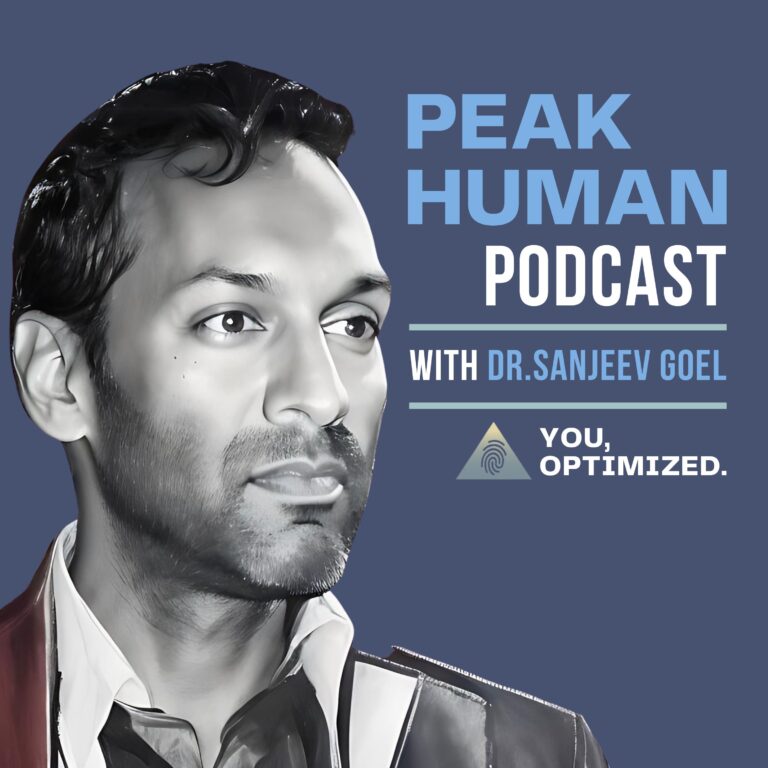Overview
The human body has a unique physiological mechanism through which energy from food is stored after food consumption. In other words, excess energy that is not used by our body at the end of the day will be reserved and ready to be mobilized when necessary.
Recently, the term “metabolic switch” has described the ability of the human body to store energy for later use to sustain normal functioning in the absence of food. This article aims to provide information about the metabolic switch and its role in weight loss.
RELATED: What Is Metabolic Syndrome & What Are Its Risk Factors and Complications
Flipping Your Metabolic Switch: The Key to Weight Loss
What Is Metabolic Switch?
The metabolic switch is the trigger point that shifts the human body’s tendency from storing energy to using energy.
Typically, the human body requires energy from food intake for its normal functioning. During metabolism, carbohydrates in food are broken down into glucose by a series of enzymatic reactions. While glucose acts as the primary energy source, excess glucose is stored in the organs like the liver as glycogen and adipose tissues as fat.
However, what if the human body is deprived of the energy source from food intake for an extended time? In such a situation, the body will find an alternative energy supply as a normal response to energy deprivation. And then, the metabolic switch is “flipped,” getting the body ready to mobilize the energy stores.
Why is Metabolic Switch Important?
The metabolic switch is crucial because it converts glycogen and fat back into glucose through fatty acid oxidation to produce ketones and maintain the body’s energy supply.
This conversion means when the metabolic switch is turned on, the primary energy source for the body shifts from blood glucose to ketones.
Ketones are produced in the liver through the breakdown of fatty acids (fatty acid oxidation) in response to food intake cessation, such as during a fasting period.
Ketones are only released into the bloodstream after glycogen stores in the liver have been depleted, meaning that there is no more glycogen to be converted back into glucose, and the body starts breaking down fat.
When Does Metabolic Switch Occur?
During the initial phase of a fast, the body primarily relies on glycogen stores in the liver to maintain glucose levels. However, a prolonged fast can deplete the glycogen stores, and the body turns to fat burning instead.
The metabolic switch occurs when the glycogen stores in the liver are depleted. The fat stores in the adipose tissues are then mobilized and converted into fatty acids, ultimately ketones, for the primary source of body energy.
The depletion of glycogen stores in the liver may occur after a person starts fasting for 12 hours. However, this time may vary with the glycogen content in the liver at the onset of the fast and the person’s energy expenditure. In other words, each individual will trigger the metabolic switch differently when starting a fasting period.
Metabolic Switch in Weight Loss
A calorie deficit is the foundation of weight loss. The fewer calories our body consumes, the more it uses alternative energy sources and sheds itself of unwanted weight. However, little do we know that the metabolic switch is the key factor behind the entire premise.
According to a report, activating the metabolic switch from fat storage to usage offers doctors an approach to helping overweight or obese individuals improve body composition due to its potential health benefits.
Surprisingly, the report also claims that intermittent fasting is a dietary regimen that can flip the metabolic switch, promoting the production of fat-derived ketones and reducing weight while preserving muscle mass.
RELATED: 5 Practical Things to Know About Intermittent Fasting Before You Start
Intermittent Fasting and Metabolic Switch
What Is Intermittent Fasting?

Intermittent fasting (IF) is a dietary pattern in which the person only consumes foods within a specific time window, typically 12 hours or shorter. It focuses on reducing the number of meals without restricting the type or amount of food.
For hundreds of years, many have recommended fasting as a remedy for many medical conditions.
This dietary pattern has been so efficient that Benjamin Franklin once said: “The best of all medicines is resting and fasting.” Likewise, Mark Twain wrote, “A little starvation can do more for the average sick man than can the best medicines and the best doctors.”
Despite the similarities, intermittent fasting and caloric restriction are different. Intermittent fasting makes you eat less frequently, while caloric restriction reduces your food intake.
Some common types of intermittent fasting include the 16:8 and 5:2 diets. The 16:8 diet, also known as time-restricted feeding, only allows food consumption within an 8-hour window between the 16-hour fasting periods.
The 5:2 diet, or whole-day fasting, requires fasting for the entire 24 hours of a day for two days per week (very low-calorie intake at 25 percent of daily energy needs is acceptable).
Intermittent Fasting Induces the Metabolic Switch
According to a study, the 5:2 diet causes ketone levels to rise significantly while glucose levels remain low on the fasting day. In this diet, the person fasts entirely on the first day and then has three separate meals on a subsequent day.
On the other hand, fasting for 18 hours does not raise ketone levels as much as the 5:2 diet, yet it causes ketone levels to rise more frequently. Notably, after only 12 hours of fasting, the metabolic switch is flipped and stays for about 6 hours until food is consumed.
In contrast, people who eat three meals and snacks daily on a typical American diet never flip the metabolic switch, and their ketone levels stay very low. Compared to people who fast intermittently, their glucose levels are also high.
Therefore, since the production of ketones is a sign of a metabolic switch being turned on, intermittent fasting can induce the metabolic switch, causing weight loss and potentially improving body composition in overweight individuals.

Intermittent Fasting Benefits on Weight Loss
In terms of weight loss, several studies have also shown the efficiency of this eating pattern on body weight. Specifically, a 16-week study of 15 adults implementing intermittent fasting showed 1.4 kg weight loss, accounting for 2.1 percent of the total body weight.
Another 8-week study of obese women following combined intermittent fasting and caloric restriction showed up to 5.3 kg weight loss, accounting for 5.6 percent of the total body weight.

Other intermittent fasting benefits include:
- Reducing visceral fat mass
- Reducing insulin resistance
- Reducing inflammation
- Reducing blood pressure
- Improving body composition
- Improving glucose metabolism
- Improving tolerance of surgery
- Improving cardiovascular health

Recent Findings in Metabolic Switch
The following findings show the benefits of intermittent fasting. This eating pattern induces the metabolic switch in various body systems and medical conditions. Be noted that metabolic switch is not the direct factor that results in the benefits, but the diet that causes it.
Metabolic Switch is Associated With the Prevention of Age-related Declines
Muscle Mass Decline
After 30, our muscle mass declines by about 3 to 8 percent every ten years. After 60, the rate of decrease is much higher. In older people, this loss of muscle mass, strength, and function contributes to muscle disorders such as sarcopenia.
Research shows that intermittent fasting, which consumes 40 percent fewer calories than usual, prevents muscle mass loss during normal aging in mice. This advantageous effect is linked to higher activity levels and better agility test results.
Surprisingly, mice on an intermittent high-fat diet do not gain weight or preserve muscle mass. Moreover, compared to mice fed the same diet without restriction, mice on an intermittent low-fat diet also grow muscle.
Cognitive Function Decline
Although we preserve our acquired knowledge and practical skills far beyond old life, aging brings about many negative changes in our cognitive abilities. The decreases in cognitive tasks requiring memory and information processing are the most substantial changes.
Once again, the intermittent fasting diet that cuts down 40 percent of calories has been shown in research to prevent the decline in cognition with age in mice. Specifically, intermittent fasting protects mice from declines in their motor skills and learning capacity.
One of the main biological mechanisms that appear to keep mice’s spatial memory intact and avoid age-related declines in brain integrity is the switch to ketone utilization.
Research also points to other potential mechanisms by which fasting can preserve cognition. For instance, intermittent fasting is linked to higher levels of brain-derived neurotrophic factor (BDNF), a substance well-known for its role in memory and learning.
Metabolic Switch is Associated With Improvement in Metabolic Syndrome
Metabolic syndrome, a combination of insulin resistance, high blood pressure, and abdominal obesity, is a significant risk factor for heart disease, increasing the likelihood of myocardial infarction and heart failure.
Research indicates that by lowering fasting glucose, insulin, and insulin resistance, intermittent fasting can ameliorate metabolic syndrome in animals and humans.
Specifically, after 8 to 24 weeks, intermittent fasting can lower insulin resistance, visceral fat, and overall fat mass. Intermittent fasting also reduces glucose levels in prediabetes by up to 6 percent, which lowers the risk of developing diabetes.
Intermittent fasting can also lower cardiovascular risks. Total cholesterol reductions typically vary from 6 to 21 percent, whereas LDL cholesterol reductions range from 7 to 32 percent.
Similarly, fasting can reduce triglyceride levels, a factor in the thickening or hardening of the arterial wall, by 16 to 42 percent. Furthermore, following 6 to 24 weeks of intermittent fasting, systolic and diastolic blood pressure may drop by 3 to 10 percent.
Bottom Line: Metabolic Switch is Key to Weight Loss
The metabolic switch is a vital mechanism of the human body that allows for weight loss by altering the body from storing to using energy. Intermittent fasting is an efficient and sustainable strategy that induces the metabolic switch, helping obese people lose unhealthy weight while retaining muscle mass and preventing age-related cognitive decline.
Even when calorie intake is not restricted, intermittent fasting can still cause weight loss and fat loss. Yet, there is a need for further research on individuals with a healthy weight. Emerging evidence suggests that intermittent fasting combined with exercise can improve strength and body composition in young, healthy people.
References
Volpi, E., Nazemi, R., Fujita, S. (2004). Muscle Tissue Changes With Aging. Current Opinion in Clinical Nutrition and Metabolic Care.
Murman, D. (2015). The Impact of Age on Cognition. Thieme Medical.
Anton, S., Moehl, K., Donahoo, W. et al. (2017). Flipping the Metabolic Switch: Understanding and Applying Health Benefits of Fasting. The Obesity Society.
If you have questions about metabolic switching or any health problems discussed here, connect with us and learn more.
At Peak Human, our team of healthcare professionals is dedicated to helping you reach your ‘peak’ health with a custom whole-person approach. Using the most cutting-edge, science-backed biohacking and aesthetic tools, technologies, and treatments available today, we help you achieve the highest physical/cognitive performance state, leading to an improved overall quality of life.
For questions or to book an appointment, don’t hesitate to contact us. Get personalized support and insight from expert physicians.
UP NEXT:
- Can Spermidine Help Slow Down Aging?
- Does Diabetes Cause Hair Loss?
- What Is Cellular Senescence & Its Role in Aging





